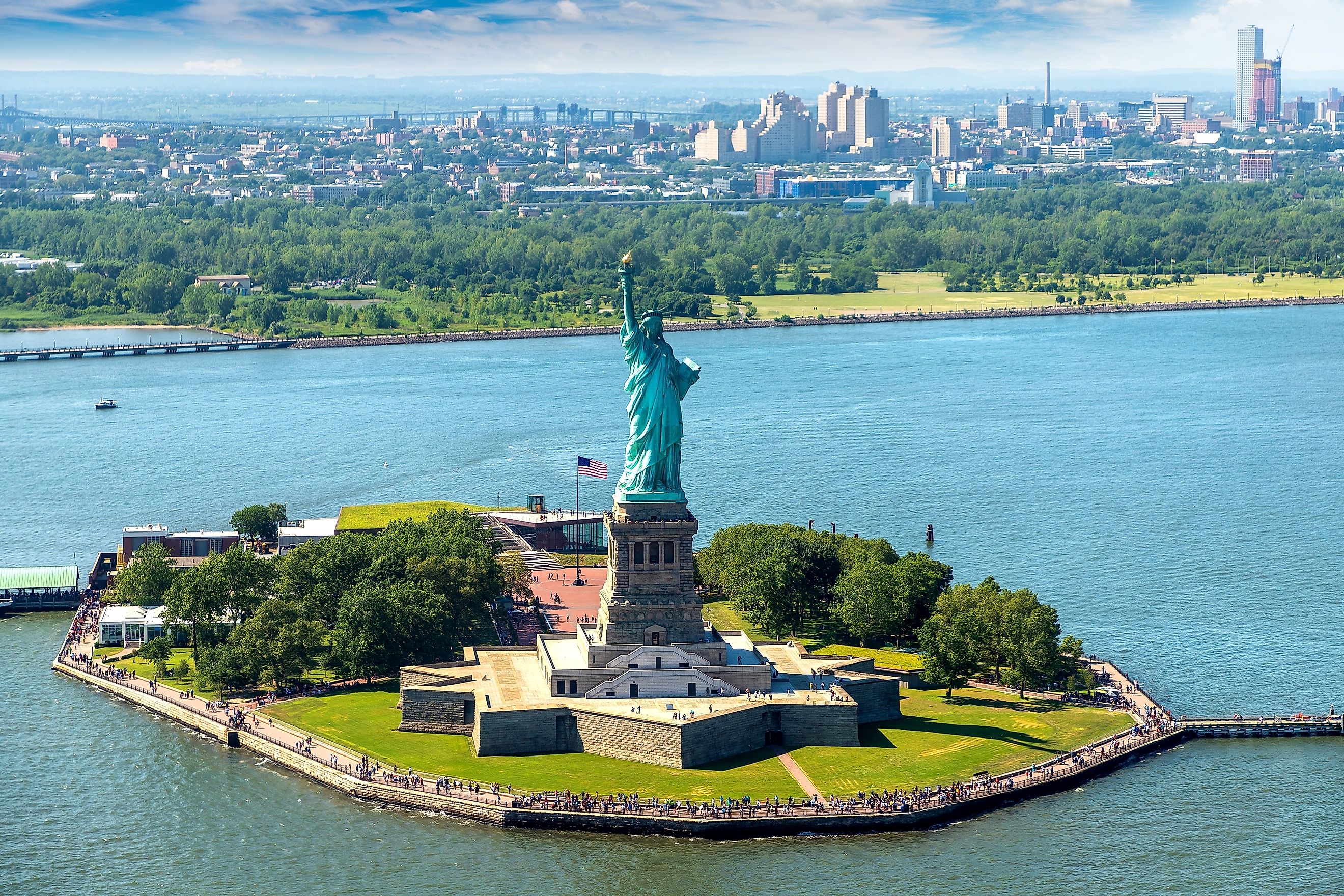
The Statue of Liberty
New York is known for many things from the beautiful Finger Lakes region to the famous Times Square, but nothing draws a crowd quite like the Statue of Liberty. Known around the world as a symbol of freedom, there’s so much more to the giant green woman than meets the eye. From her construction to her journey across the Atlantic Ocean, the Statue of Liberty has had a long and interesting journey so far.
Symbolism and Meaning
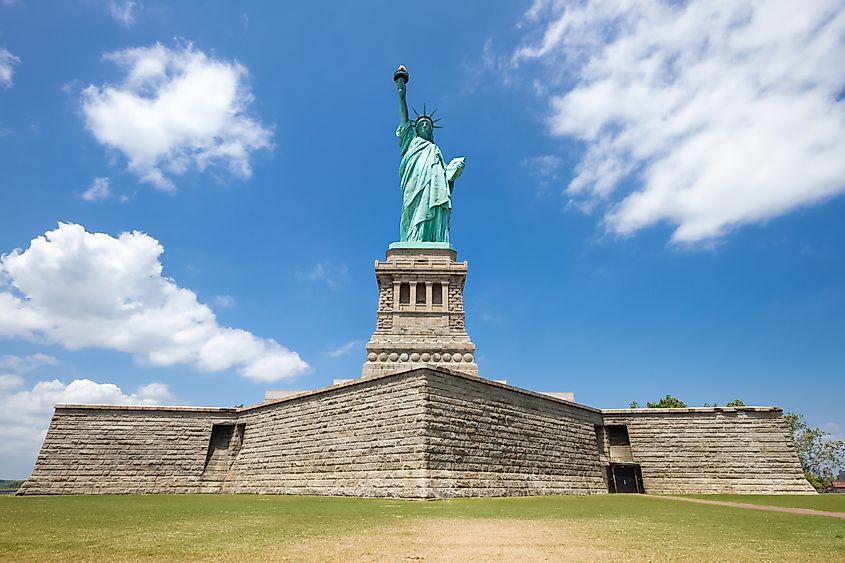
Statue of Liberty view including pedestal and base, New York.
The Statue of Liberty, not surprisingly, is meant to symbolize universal freedom, hope, and liberty. But it has other meanings as well. Inscribed at the base of the statue a poem by Emma Lazarus reads, “Give me your tired, your poor, /Your huddled masses yearning to breathe free, /The wretched refuse of your teeming shore. /Send these, the homeless, tempest-tossed to me, /I lift my lamp beside the golden door!” The Hispanic Outlook On Education Magazine explains the meaning behind Lazarus’s words as “her way of urging Americans to embrace the poor and destitute of all places and origins."
The statue, originally gifted to America by France in 1886, also symbolizes a budding friendship between the two countries. While the statue remains an important symbol of friendship and immigration, The Mother of Freedom was also intended to celebrate the abolition of slavery in the US according to the National Endowment for the Humanities. In short, the Statue of Liberty holds many deep and meaningful symbols for Americans and people all around the world.
Design and Construction
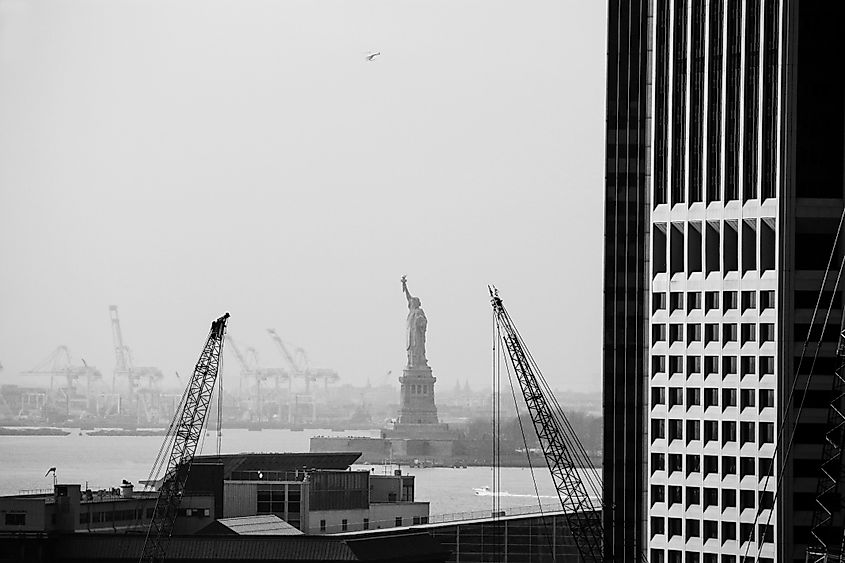
Two cranes next to a skyscraper with the statue of liberty in the background, New York, NY, United States
The Statue of Liberty was designed by Frédéric Auguste Bartholdi, a young artist born in Colmar, France. The National Parks website states, Bartholdi had a fondness for making statues and drew inspiration during a trip to Egypt when he noticed “colossal statues” amidst the ruins of ancient Egyptian cities.
Years later it was scholar Édouard de Laboulaye that gave Bartholdi the idea to use his artistic talent to build a friendship between France and the US. After Bartholdi’s pitch for the statue was accepted, it was eventually decided that “France would raise funds for the statue while Americans raised money for the pedestal.”
During the construction process, parts of the statue were shown off to curious spectators. The head and shoulders could be seen in Paris, while the arm and torch made appearances in Philadelphia and New York. These displays helped raise the funds needed to complete the project.
Constructing the Statue of Liberty was no small task. Between the metal framework and the outer copper layer, the statue stood just over 151 feet tall and weighed 225 tons before it was disassembled and shipped to America.
Journey from France to New York
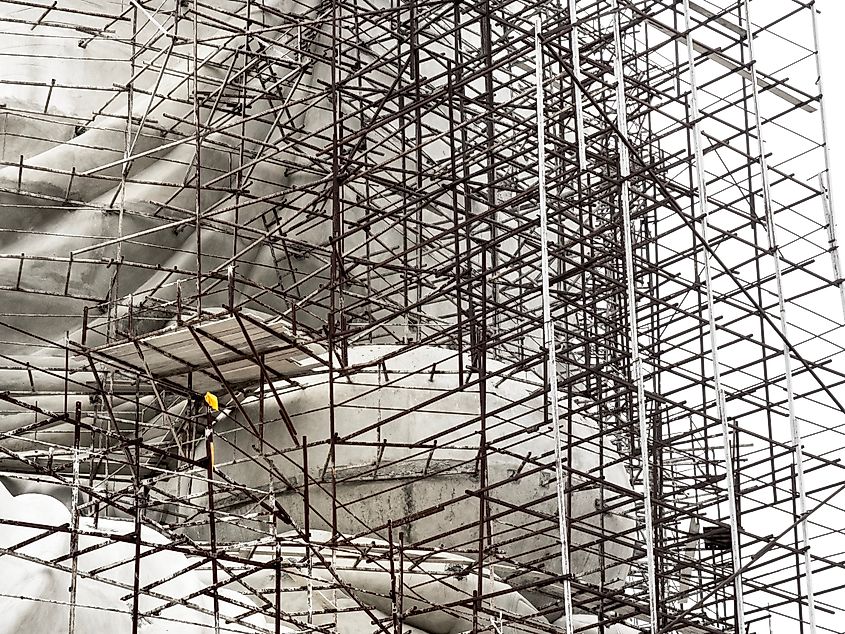
To disassemble, the Statue of Liberty was broken down into 350 pieces and subsequently placed inside 215 crates. The crates were then packed onto a boat called Frigate Isère. From there, the crew alongside Mother Liberty set sail across the Atlantic Ocean with the US in their sights. The boat reportedly departed on May 21, 1885, and arrived on American shores just 27 days later, according to the South Street Seaport Museum in New York. The museum also reports that the journey across the Atlantic wasn’t an easy one by any measure.
Restoration and Preservation

The Statue of Liberty has clearly stood the test of time, but not without a little help from French and American architects. Back in 1982, just a few years shy of the statue’s 100th anniversary, President Ronald Reagan put together a foundation designed to restore and preserve the important piece of art. This restoration project began in 1984. Scaffolding erected and work on restoring the statue began.
Workers have repaired damage on the inner metal framework and patched holes in the outer copper layer. The torch and flame, badly damaged by weather, have been replaced with replicas.
The restoration project was completed in 1986 and celebrated with fireworks on July 4.
Tourism
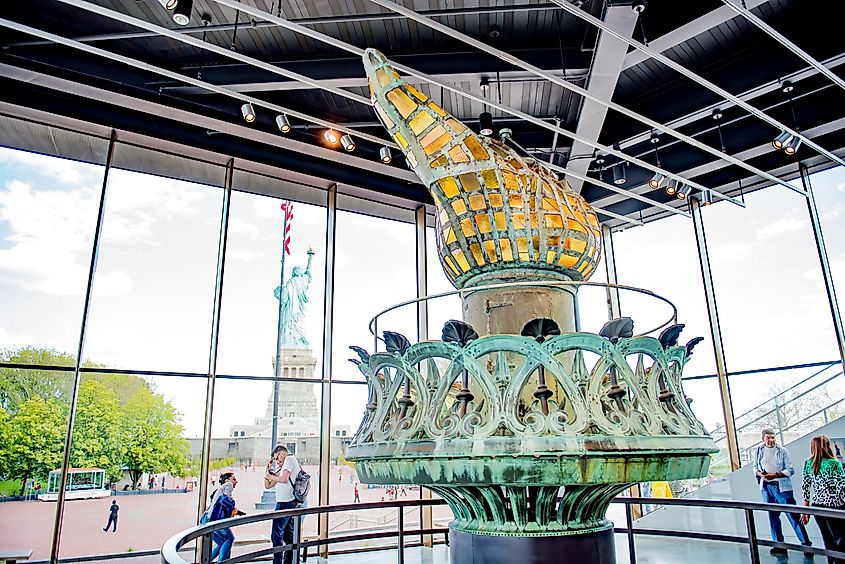
Today, the Statue of Liberty remains one of New York’s most popular attractions, consistently drawing around 3-4 million tourists each year. During a visit to Liberty Island, travelers can explore the Liberty Museum, enjoy self-guided audio tours, and climb to the interior crown of Mother Liberty herself.
Fun facts
- The Statue of Liberty has several nicknames including, America's Freedom, Lady on a Pedestal, Mother of Freedom, Saint Liberty, and Green Goddess.
- The Statue of Liberty’s original color was copper. Over time, the outer copper layer oxidized from the sea air, turning the statue into the iconic green goddess we know and love today.
- On particularly windy days, visitors can see the Statue of Liberty sway up to 3 inches.
- For a few years starting in 1886, the Statue of Liberty served as a functioning lighthouse.
In Conclusion
The Statue of Liberty is an important symbol, not just in New York, but across the country and beyond. For many, she serves as a constant reminder that freedom, peace, and understanding are vital pillars of any successful community. For others, she represents hope for the future. Whatever the statue means to you, she’s worth paying a visit to.